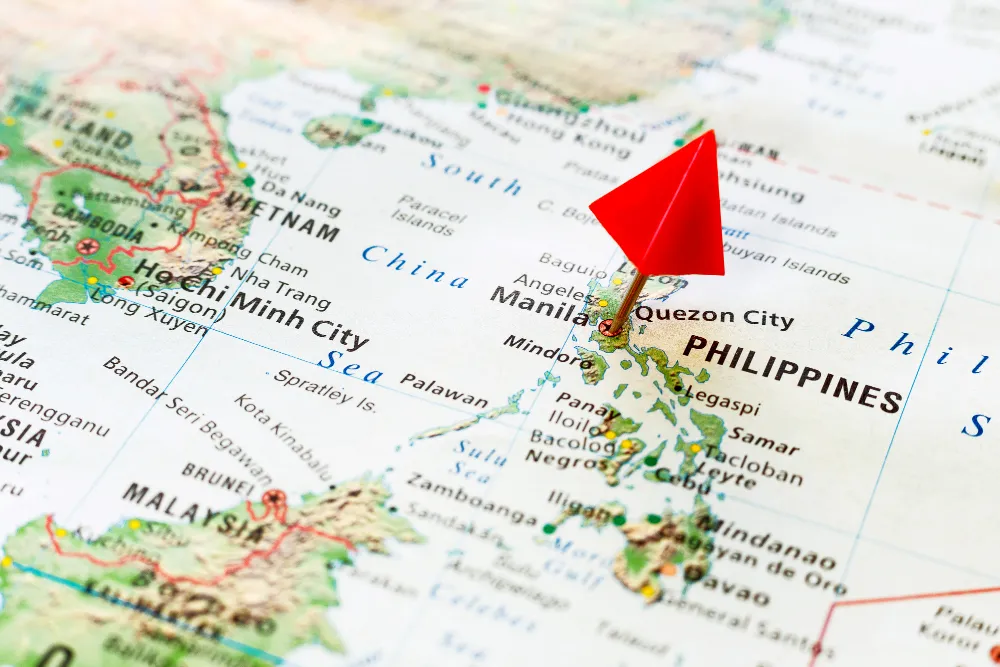
Philippines Geography: A Fascinating Archipelago
Introduction philippines geography
philippines geography, The Philippines is a tropical paradise known for its stunning landscapes, diverse ecosystems, and rich cultural heritage. As an archipelagic nation, its geography plays a crucial role in shaping the lives of its people, influencing climate, economy, and even cuisine. Let’s dive into the fascinating geographical features of this beautiful country.
General Overview of the Philippines
Located in Southeast Asia, the Philippines consists of 7,641 islands, stretching over 300,000 square kilometers. Surrounded by the Philippine Sea to the east, the South China Sea to the west, and the Celebes Sea to the south, the country boasts an extensive coastline and a tropical maritime climate.
Major Geographical Features
The Three Main Island Groups
The Philippines is divided into three major island groups:
- Luzon – The largest and most populous island, home to Metro Manila.
- Visayas – Known for its white sand beaches and vibrant culture.
- Mindanao – The second-largest island, famous for its mountains and biodiversity.
Mountain Ranges and Volcanoes
The country is home to breathtaking mountain ranges, including the Cordillera Range in Luzon. The highest peak, Mount Apo, towers at 2,954 meters in Mindanao. The Philippines also has several active volcanoes, such as Mayon Volcano, Taal Volcano, and Mount Pinatubo.
Bodies of Water
With thousands of islands, the Philippines has numerous rivers and lakes, including Laguna de Bay, the largest lake, and the Cagayan River, the longest river in the country. The surrounding seas are rich in marine biodiversity, making the Philippines part of the Coral Triangle.
Climate and Weather Patterns
Two Main Seasons
The Philippines experiences two primary seasons:
- Dry season (November to April) – Best for travel and outdoor activities.
- Wet season (May to October) – Marked by heavy rains and occasional typhoons.
Typhoons and Natural Disasters
Being in the Pacific Ring of Fire, the country faces frequent typhoons, earthquakes, and volcanic eruptions. Despite these challenges, Filipinos remain resilient, adapting through disaster preparedness and community cooperation.
Biodiversity and Natural Resources
Rich Flora and Fauna
The Philippines is a biodiversity hotspot, home to endemic species like the tarsier, Philippine eagle, and tamaraw. National parks and conservation efforts aim to protect these unique creatures.
Marine Ecosystem
The Philippines is part of the Coral Triangle, hosting over 500 coral species and thousands of marine creatures, making it a haven for divers and marine biologists.
Human Geography
Population Distribution
With a population of over 113 million, the Philippines has densely populated cities like Metro Manila, while rural areas remain less crowded.
Major Cities and Economic Centers
- Metro Manila – The capital region and economic hub.
- Cebu City – A growing tech and business center.
- Davao City – Known for its clean environment and thriving agriculture.
The Role of Geography in Culture and Lifestyle
Geography influences everything from food to language. Coastal areas rely on fishing, while mountainous regions practice agriculture. The variety in landscapes leads to regional differences in cuisine, festivals, and dialects.
Environmental Challenges
Deforestation, illegal mining, and climate change threaten the country’s rich biodiversity. Rising sea levels also pose risks to coastal communities. Conservation efforts are crucial for sustainability.
Conclusion philippines geography
The Philippines’ diverse geography is a treasure trove of natural beauty and resources. Understanding its landscapes helps appreciate its culture and environmental challenges. Preserving these wonders ensures a thriving future for generations to come.
FAQs philippines geography
- What is the largest island in the Philippines?
- Luzon is the largest island.
- How many active volcanoes are there in the Philippines?
- There are around 24 active volcanoes.
- What is the significance of the Coral Triangle?
- It houses the richest marine biodiversity in the world.
- Which city is the most densely populated in the Philippines?
- Metro Manila holds this title.
- How does geography affect Filipino culture?
- It influences food, traditions, and livelihoods.
Check out also History of the Philippines
